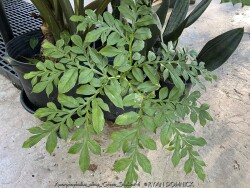
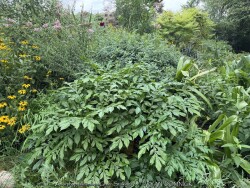
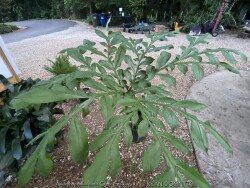
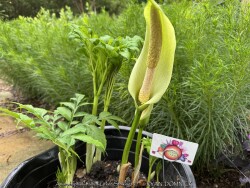
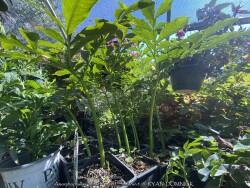
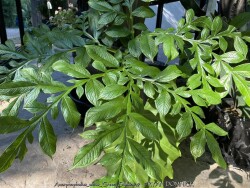
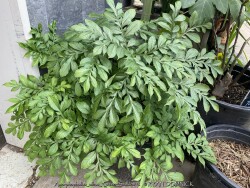
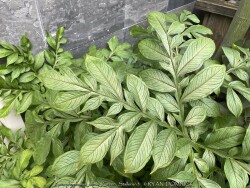
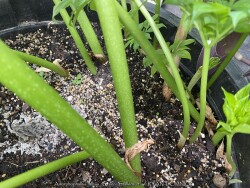
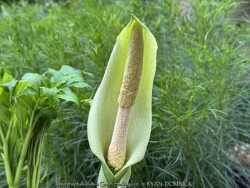
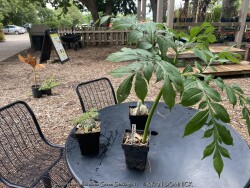
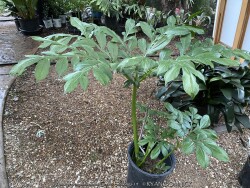
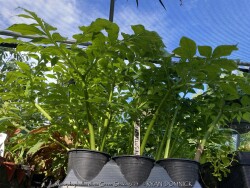
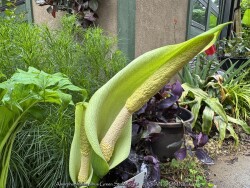
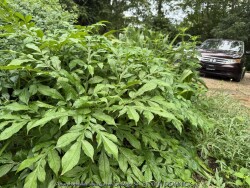
Plant Min Zone: 6a
Plant Max Zone: 10a
Sunlight: Full Sun, Part Sun, Shade
Water / Rainfall: Average, High
Soil Quality: Average, Rich
Bloom Season: Early Summer
Flower Color: Cream
Berry / Fruit Color: Orangish Red, Orange
Spring Foliage Color: None: Dormant
Summer Foliage Color: Green
Fall Foliage Color: Green, Yellow
Evergreen Foliage: No
Winter Interest: No
Scented Flowers: Yes
Drought Tolerance: Medium
Wet-Feet Tolerance: Medium
Humidity Tolerance: Medium, High
Wind Tolerance: Low, Medium
Poor Soil Tolerance: No Extreme Soils
Height: 1' - 1.5'
Width: 1' - 1.5'
Growth Rate: Medium
Service Life: Long: 5-10 years
Maintenance Need: Low
Spreading Potential: Medium
Yearly Trimming Tips: Bulbs Do Not Need Any Trimming: Let Foliage Die Back Naturally.
Plant Grouping Size: Specimen Planting of 1-3, Small Grouping of 3-5
Best Side of House: South Exposure, West Exposure, East Exposure
Extreme Planting Locations: None
Ornamental Features: Large Tropical Foliage / Flowers
Special Landscape Uses: None
Possible Pest Problems: None
Plant Limitations: May get Occasional Winter-kill, May be Dormant in Summer, Unpleasant Smelling Flowers / Foliage
Shippable in 2026: YES
***Description for this hardy tropical available with future update!*** Amorphophallus albus 'Green Stalkings' is also known as Green Stalkings / Amorphophallus >>>>>>>>>>> Plant Delights Nursery says "This little-known but easy-to-grow voodoo lily is native to the Yunnan Province of China. The stalks are either solid green or green with grey spots and are each topped with a glossy green leaf. Amorphophallus albus is a fast offsetting species that forms a nice 2' wide patch (in 5 years) in the woodland garden. In spring, just as the leaf emerges, a 1' tall flower stalk appears alongside it with a 6-8" tall flower perched on top. Each flower resembles a large ivory shell showcasing a white, cigar-like appendage...green at the tip and white at the base." >>>>>>>>>> Voodoo (Amorphophallus konjac) lily is a perennial tuber generally grown as a curiosity for its interesting foliage. The single leaf consists of a stalk (petiole) with mottled pinkish-gray and olive green coloration. The single intricate leaf has horizontal sections giving it a tropical umbrella-like effect. Larger tubers (about the size of a grapefruit or larger) may produce a single "flower" in spring before the foliage appears. The "flower" is actually a large shiny purple to maroon ruffled spathe. When in bloom it produces an odor like a dead animal for 1 day. This is intended to attract the carrion flies that are its natural pollinators. It is possible to overwinter these in the ground in Kansas by placing a 6-12" mound of mulch over deeply planted tubers. New growth will usually be delayed until June but quickly regains full height and will get bigger each year; buried tubers are hardy to zone 6a. They can also be grown as a flowering summer patio plant. If growing as a potted plant and trying to overwinter, allowing the foliage to frost is ok, it will not kill the root system. However, do not allow the pot with rootball to freeze solid or go below 20 degrees for more than a few hours; move into a cold garage or basement over the winter with no watering. Cut back and allow to go dormant and place entire pot back out in April or May with a time-release fertilizer. Plants can get huge and exotic looking as a potted patio plant. Grown in Japan and Korea as an edible corm. Testing in Lawrence KS display gardens has been successful; surviving temperatures of -11F (2024)